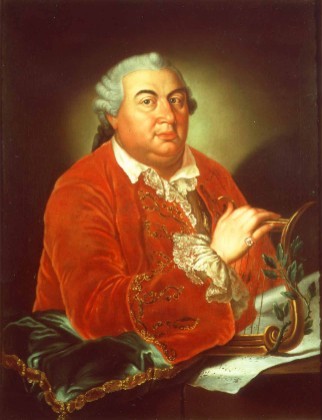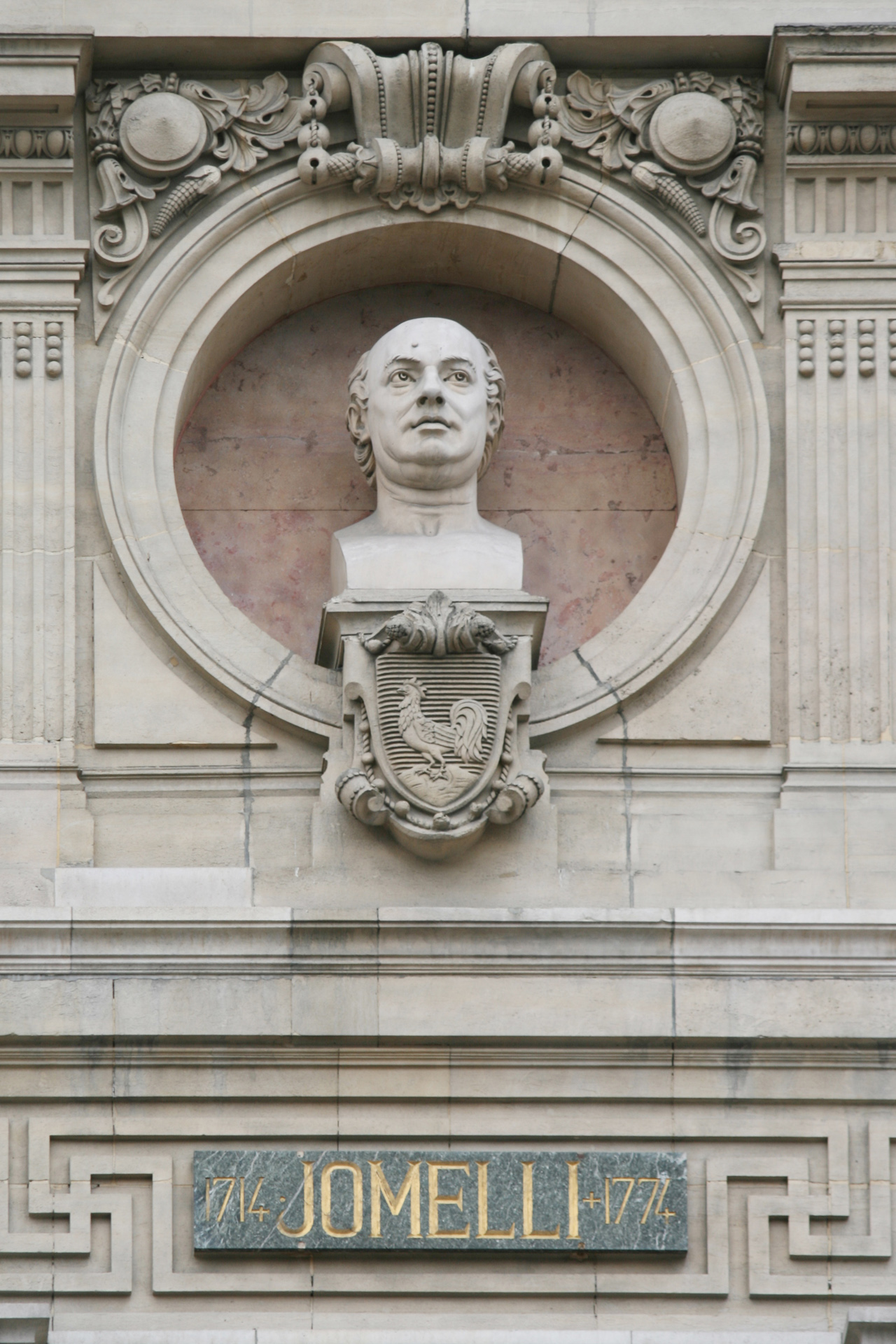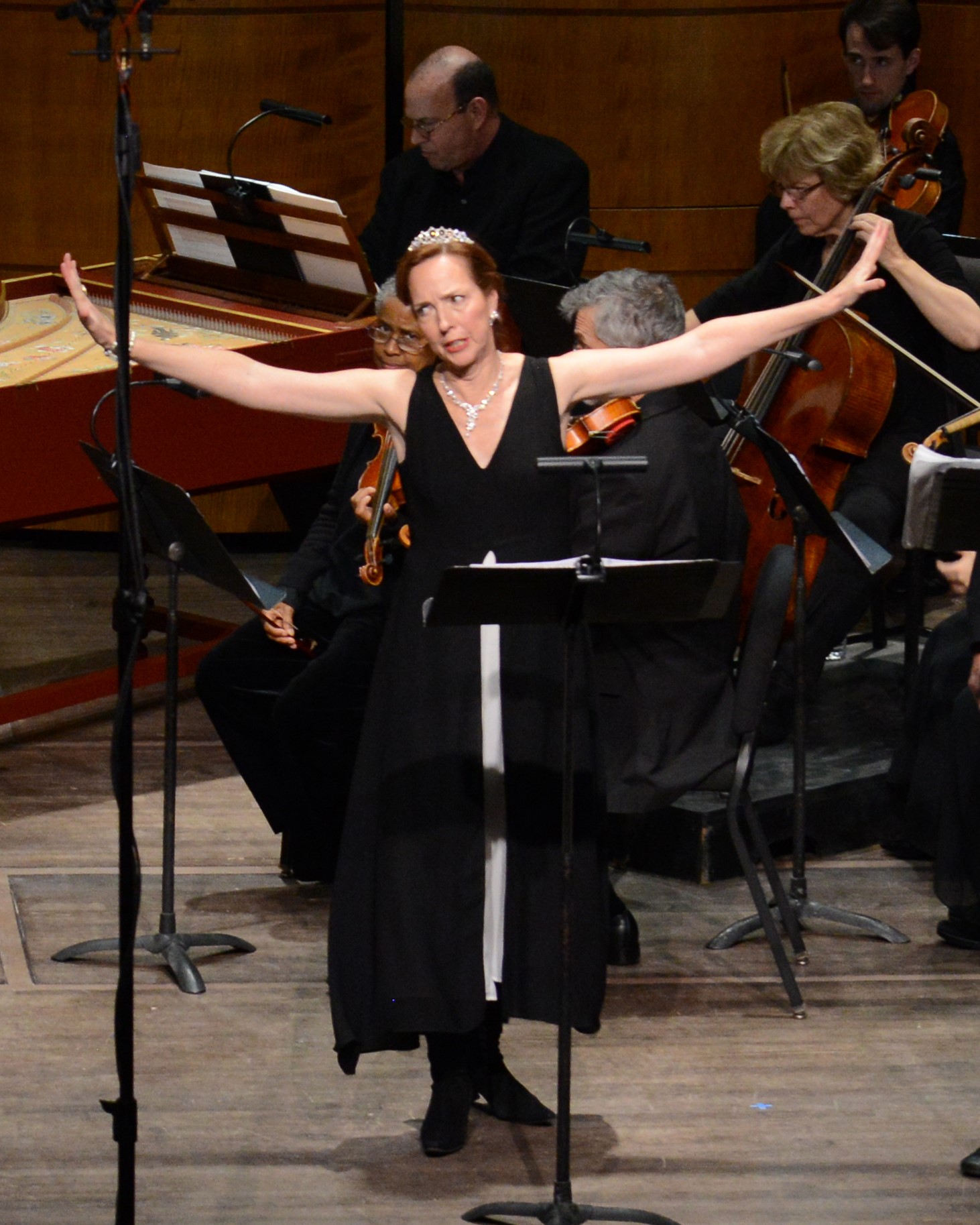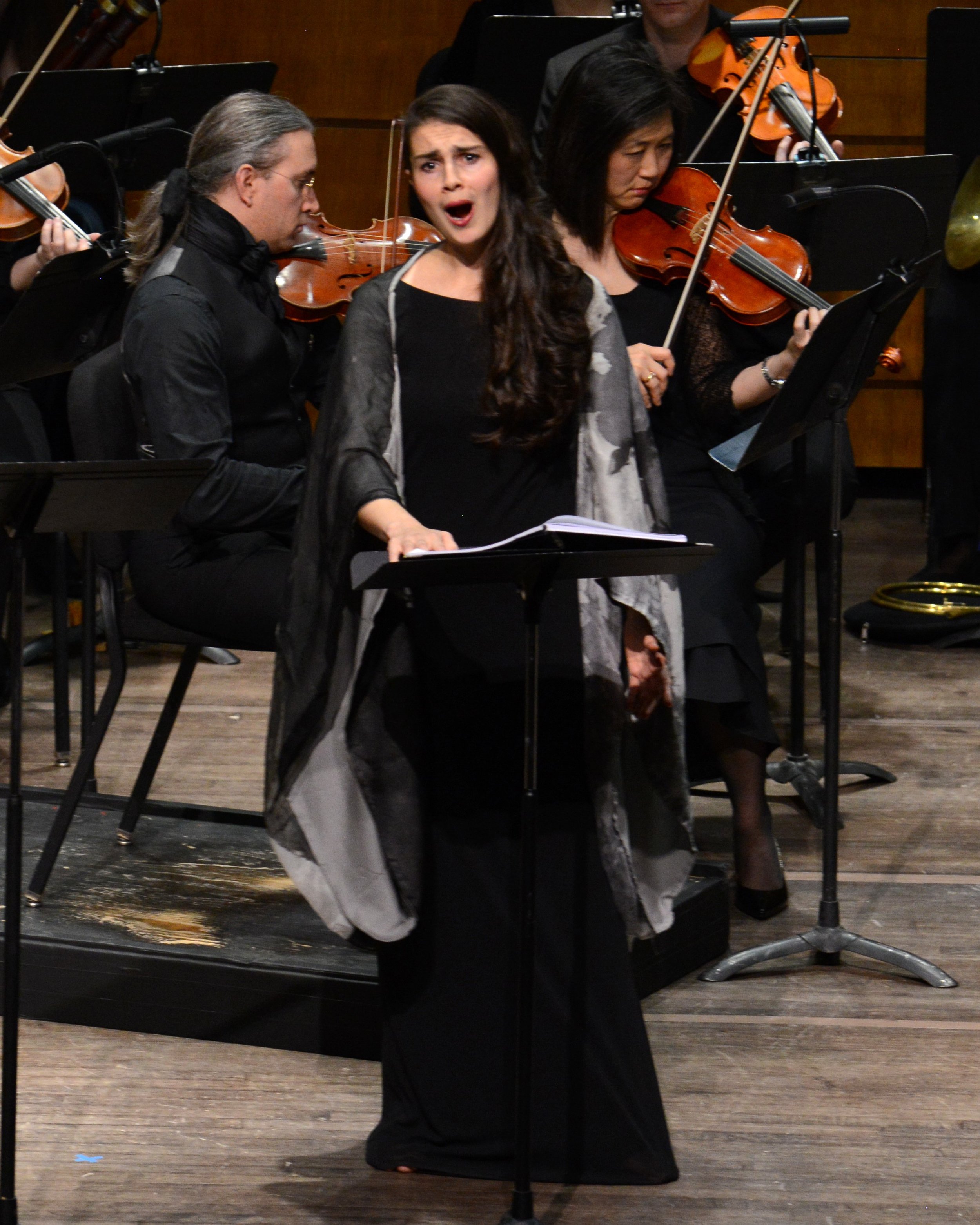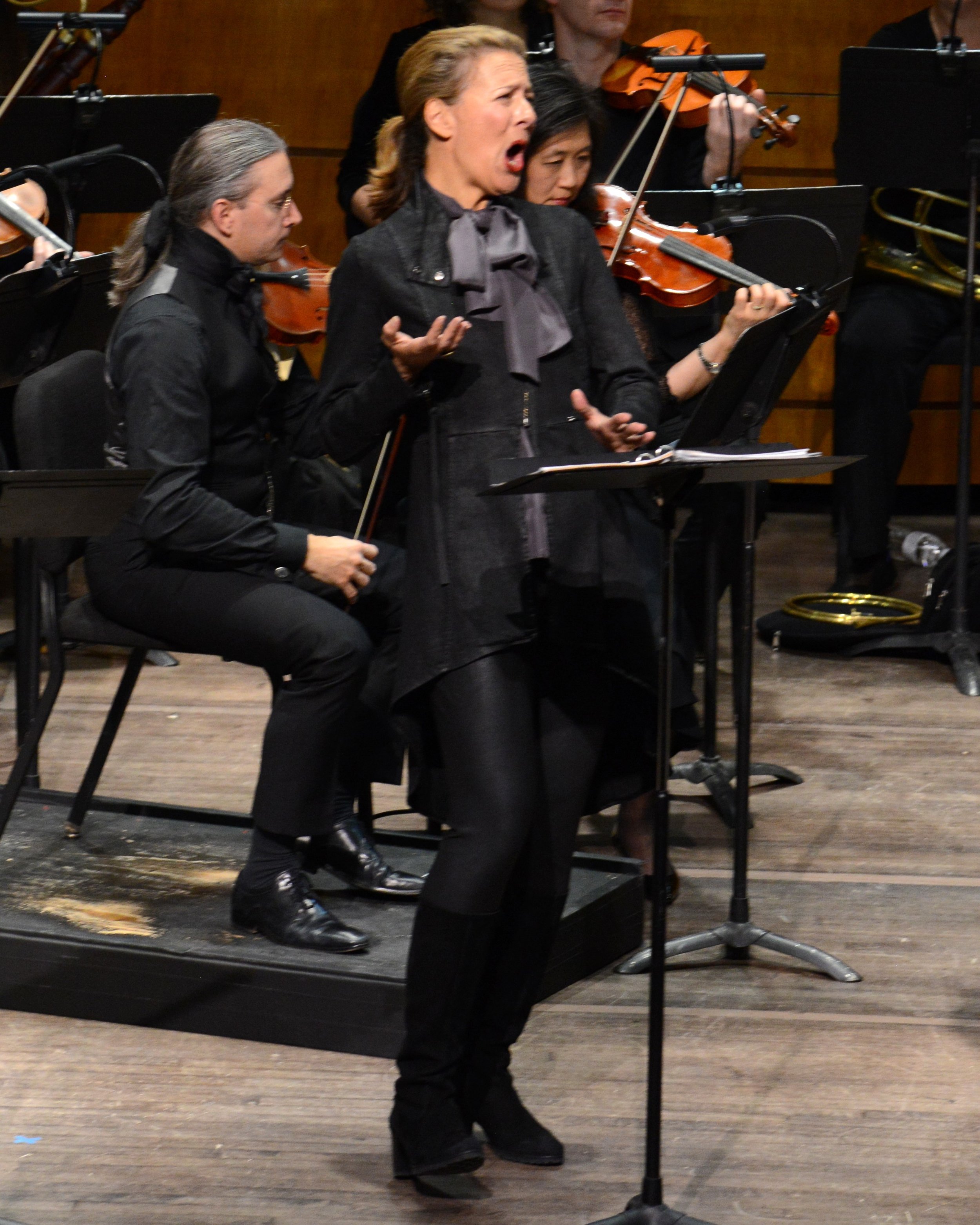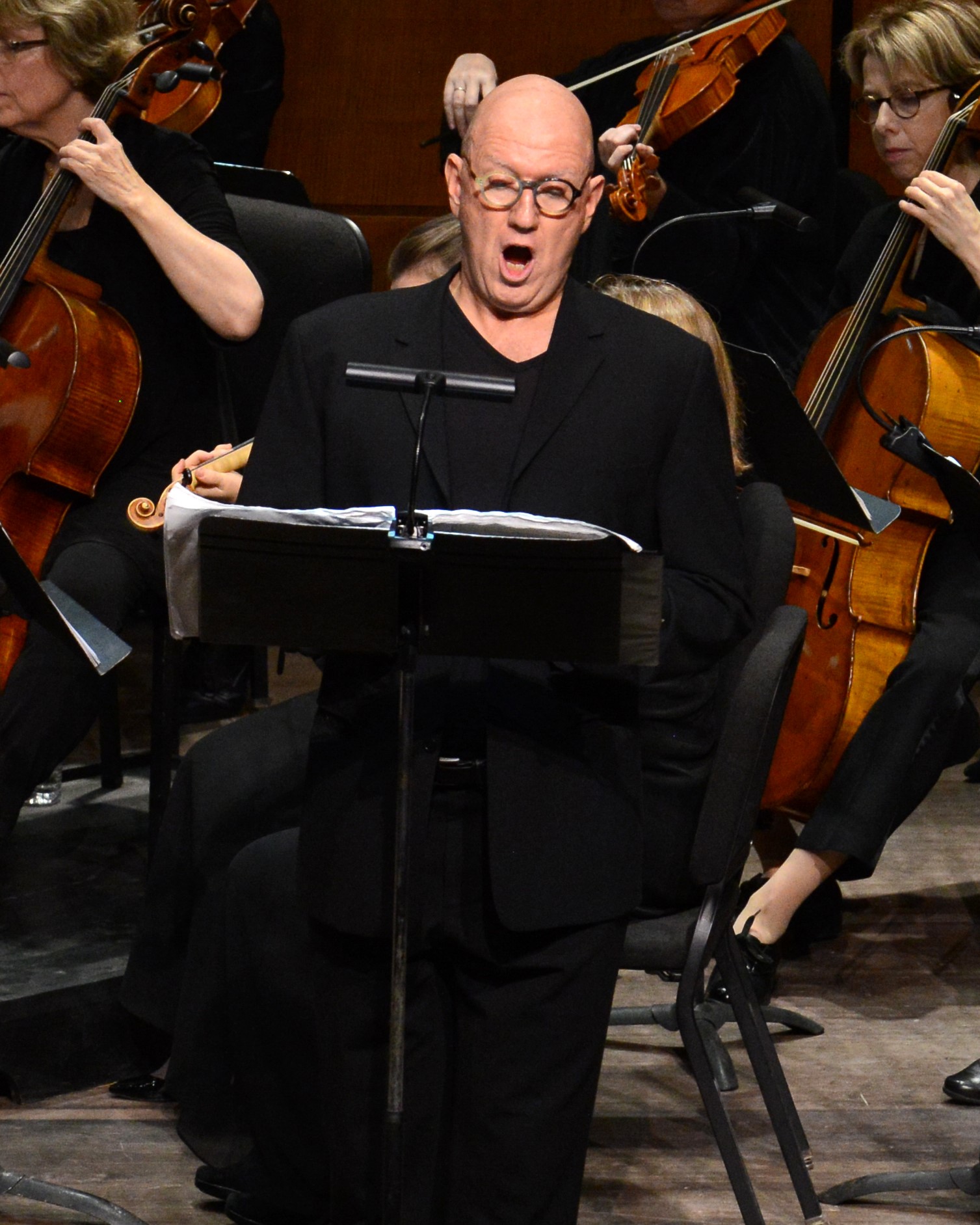Opera Lafayette is DC’s portal to 18th century musical gems that have largely disappeared from view over the ensuing centuries. From a century that included Bach, Beethoven, Donizetti, Handel, Haydn, Mozart, Rossini, and Schubert, among others, it is difficult to get noticed and played today. Many excellent musical works from that period lay dormant. Cerere Placata (1772) by composer Niccoló Jommelli and librettist Michele Sarcone certainly qualifies. Ryan Brown, founder, artistic director, violinist, and conductor of OL since its inception, has made discovering these compositions and their performance on period instruments OL’s mission and his life’s work. Until Sunday night, he had never turned over the reins of the orchestra to another conductor. Flutist Charles Brink, who has served in the OL orchestra and has an interest in music history used four of the five existing copies of Niccoló Jommelli’s score to painstakingly construct what he believes to be the most authentic version of Cerere Placata. Mr. Brown worked with Mr. Brink on this project and allowed him to conduct Cerere, its first performance since its original presentation 246 years ago.
Portait of Niccoló Jommelli and a bust of him on the walls of Opera Garnier, Paris. Photos in public domain and copied from Wikipedia.
So, let’s go back to Naples in 1772. This is now the major center of music in the 18th century; at that time it was known as the “conservatory of Europe”. There were three schools of music operating in Naples that took in boys between the ages of eight and twelve for a ten-year period of full-time study. Many of the major composers resided or studied there and the opera house, Teatro di San Carlo, was renown across Europe. Nicoló Jommelli was born outside of Naples and returned there for the last years of his life as perhaps the most celebrated composer of his time; he died two years after completing Cerere. His legacy has been one of influence over the music and composers of that period, including a young Mozart.
It was customary in those days for major events to be celebrated and commemorated with a new musical composition, referred to as a festa teatrale, a music drama performed in concert. Cerere Placata was commissioned to celebrate the birth and baptism of Princess Maria Teresia di Borbone, daughter of the King and Queen of Naples and Sicily, and who was destined to become the first Empress of Austria through marriage. Well, those crazy Neapolitans knew how to throw a party for such an occasion, especially enriched by Spain’s King Charles III who sent an emissary to help organize and spare no expense for this extravaganza. They partied for weeks and everything had to be first rate. They got the best composer (Jommelli) to create the festa teatrale and the best singers and dancers to perform it; four of the soloists were the top singers in Europe at the time. We were told at the pre-performance talk that the original opera had 18 rehearsals and the accompanying ballet had 38. Any of today’s stage directors around the world would be drooling, and company budget managers would be taking tranquilizers.
left: Jennifer Casey-Cabot as Cerere. right: Laetitia Grimaldi as Proserpina. Photos by Russell Hirshorn; courtesy of Opera Lafayette.
A distinguished physician and epidemiologist, Michele Sarcone was selected to write the libretto. Sarcone would not go on to be a famous librettist, but his medical work would become important in the field of immunizations. He developed a drama based on the popular story of Persephone’s abduction by Hades, but veered significantly away to suit the politics and the requirements of the occasion, and of course, used the Italian names relating to Roman gods (who correspond to a similar set of Greek gods). Proserpina and Titano (King of Spain) have eloped since her Mother Cerere, Queen of Sicily, refused to give permission for them to marry. Cerere believes her daughter was abducted and in her rage vows to have any foreigners who enter Sicilian territory killed. The young lovers wash up on shore in a storm, fearful of encountering the angry Queen. We hear a lot from Cerere about being torn between rage and love; from Proserpina and Titano about their love for each other and fear of mom’s revenge; from Cerere’s counselor Alfeo about not acting too harshly; and from the high priest about proper order where Cerere is the law – live with it or die with it. Just when we thought the couple was done for, the lights shine for Giove (Jupiter) in the back of the auditorium. He swoops in to proclaim that the couple about to be put to death is favored by the gods and destined to produce heirs that will become great rulers, including Maria Teresia. Mom does one of the all time great about faces and is delighted = grandkids! I make light of it, but the emotions being expressed up to that point were affecting and the tension until the ending, which comes across as comical today, was palpable. The opera was given in concert form, but even so, the players are in character and must move around as well as off and back on stage, and use gestures to add to the drama; kudos to stage manager Paul Peers for making this effective.
left: Stephanie Houtzeel as Titano. right: Thomas Michael Allen as Alfeo. Photos by Russell Hirshorn; courtesy of Opera Lafayette.
I have grown to think of OL productions as part PBS special and part pure entertainment. For me, Part I of Cerere Placata was mainly PBS special. I watched and listened out of interest at hearing something new and mostly pleasurable overall, but to this untrained ear, early it didn’t always sound quite right, can’t put my finger on it; maybe it was just unfamiliar music to me. However, Part II provides an impressive aria smackdown, and it got good, real good. I would go see Part II again. The music was more interesting and the playing smoother. Perhaps the 26-piece orchestra and Conductor Brink were hitting their stride. I especially liked the oboes in some of the arias, one especially mirroring a lovely aria by Proserpina. And as each singer took their turn delivering an aria, my internal picking of whom was best kept changing. I would also go to hear this cast of singers again. It was synchronicity that I just read a definition of “accompanied recitative” the other day, whereby the orchestra instead of a single instrument such as a piano or harpsichord accompanies the recitative; it can add to the dramatic impact of the text. Jommelli was a master of this form and it was effectively employed in Cerere.
Laetitia Grimaldi as Proserpina and Stephanie Houtzeel as Titano. Photo by Russell Hirshorn; courtesy of Opera Lafayette.
Cerere’s rage and threats were played to perfection by soprano Jennifer Casey-Cabot; I wouldn’t want her angry with me. Some of her runs could easily expose any singing flaws and every note was spot on, a very impressive performance. Her daughter Proserpina was played by soprano Laetitia Grimaldi who brought a colorful voice and spark to her role. These two were very convincing as a mother-daughter pair in conflict. Ms. Grimaldi also had a very lovely duet with mezzo-soprano Stephanie Houtzeel who played Titano; Proserpina says she will kill herself if he is put to death and Titano tries to persuade her not to. Ms. Houtzeel has a warm, velvety voice and an assured stage presence that made her a stand out; her arias might have been my favorite. Her acting had a Shakespearian quality; she could play both Lady and Lord Macbeth! And not to be overlooked in the outstanding category was lyric tenor Thomas Michael Allen who played Alfeo trying to reason with Cerere. Hearing his beautiful voice and singing, I had the feeling of wanting to hear him sing in the Messiah. Soprano Arianna Zukerman who played the high priest has a powerful voice and used it to bring authority to her role. Tenor Patrick Kilbride who played Giove sang well, I think. Actually, his appearance on stage was a surprise and was short, and he moved about the aisles and stage much like a Las Vegas showman pushing his singing into the background, but it was a happy, if rollicking, finish.
In a curtain call for Cerere Placata’s first performance in 246 years, at center, Conductor Charles Brink holds up his copy of Jommelli’s score. Photo by Russell Hirshorn; courtesy of Opera Lafayette.
Opera Lafayette has a loyal fan base and are now coming close to, if not, selling out the Terrace Theater. Personally, I no longer ponder whether I want to attend an OL performance or not; I just go. Their productions are as authentic as you can get. They often include dance as part of their performances. I wish some of the ballet had been included on Sunday night. However, as it was, the opera ran three hours. Throw in a ballet and you are pushing into Wagnerian territory. As I said, those crazy rich Neapolitans knew how to party, by Giove!
The Fan Experience: Opera Lafayette has two more productions this season: Handel’s Radamisto on February 5 and Stradela’s La Susanna on April 21, 22. I typically recommend that opera goers attend the pre-performance talks for information and insights that will increase their enjoyment of the opera, but I especially recommend them for Opera Lafayette productions because the works will most likely be so unfamiliar to you. On Sunday night, Director Ryan Brown, Conductor Charles Brink, and Dr. Anthony DelDonna (professor of musicology at Georgetown University and author of “Eighteenth-Century Opera”) held a fascinating group discussion as the pre-performance talk. Some of the information in this blog report was gleaned from their comments.

